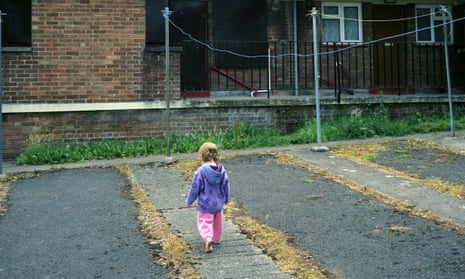After the initial shock of two child murders hitting the headlines in the space of a fortnight, apprehension grew among some people working in and around children’s social care. Was it the “Baby P” Peter Connelly story all over again? Would politicians and the media decide, once again, that “something must be done”?
Certainly children’s social care gets in the spotlight normally only at times when a child has been abused and killed. Inquiries into Peter, Victoria Climbié and others intensified public and media fury and despair. Now it is the turn of six-year-old Arthur Labinjo-Hughes and 16-month-old Star Hobson.
Compared with the frenzied tabloid aftermath of the Peter case, this time the media and politicians have been restrained. It was striking that Nadhim Zahawi, the education secretary, told MPs during his Commons statement on Arthur’s death that he thought social workers were doing “a tremendous job”.
Compare that with when Peter was killed in 2007, when politicians and the tabloid media stoked public rage over a child killing. They scapegoated social workers in the London borough of Haringey and their boss, Sharon Shoesmith, was sacked on live TV by the then children’s secretary, Ed Balls. She eventually won her case for unfair dismissal but the degraded public debate cast a bitter pall over child protection, and not only in Haringey.
This time the debate does not look nearly as toxic. But there is nervousness that the shock of this month’s high-profile child deaths will fuel a collective urge to rip up the current system of child protection, that the singular deaths of Arthur and Star must be honoured through new legislation.
This week, the editor of the Yorkshire Post, James Mitchinson, tweeted that child protection was not fit for purpose. “The leadership, the strategy, the rescue criteria: it is time to clear out the whole lot and start again,” he wrote. “If the system set up to protect babies like Star remains inert when presented with this, it is broken.”
Eileen Munro, the emeritus professor of social policy at the London School of Economics, who carried out a review of child protection for the government in 2011, told the Guardian it would be unwise to launch into a major overhaul of social care on the back of such vivid and unusual protection tragedies.
There was much to learn from the two cases, she said, not least the impact of lockdown on day-to-day practice decisions. “But I’m concerned the government might adopt the ‘something must be done’ approach. Every time they do that they simply restructure [services]. I’m old enough to know restructurings never work. Keep child protection in perspective,” she said.
Annual numbers of deaths from abuse or neglect of children known to social services have remained stable for several years at about 58 in the UK. It could always be fewer, but Britain, Munro points out, “has a relatively low death rate compared with the US and Australia”.
However, some councils, such as Bradford, where Star died, have deep-rooted problems with staffing shortages and unstable management – but others, such as Leeds, Essex and Hertfordshire – have reputations for strong leadership and practice. Increasing numbers of children’s services are rated as “outstanding” by Ofsted, Munro says.
She calls for a keener focus on the basics, which means the quality of practice and ensuring social workers are not crushed by unmanageable caseloads. Some in Bradford had up to 50 cases at any one time.
Munro added: “One of the biggest problems is that we do not have enough social workers with enough time to spend with families to get to know them.”
Sir Alan Wood, a former director of children’s services in Hackney and a government adviser, said there was a case for training child protection specialists – to work across social work, police and health – with the forensic skills to understand children and cope with manipulative adult behaviours.
But he cautioned against “knee-jerk” reactions to child deaths involving massive structural changes as local safeguarding agency arrangements were reorganised just two years ago. A bigger contextual issue for child protection, he argued, was the underfunding of family help and early intervention services.
Nonetheless, a root-and-branch review of children’s social care commissioned nearly a year ago by the government is due to report in the spring. The national review of the safeguarding “lessons learned” from Arthur’s case is also under way. No change may not be an option.







